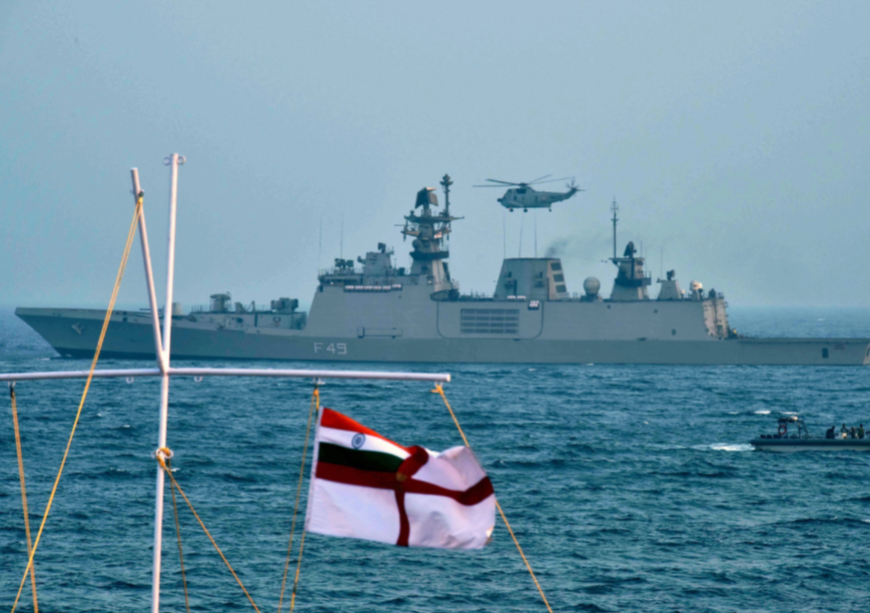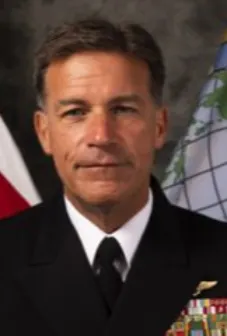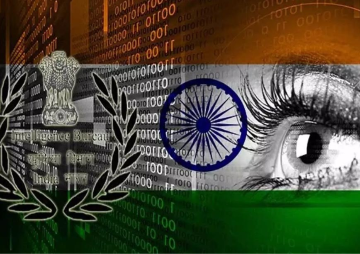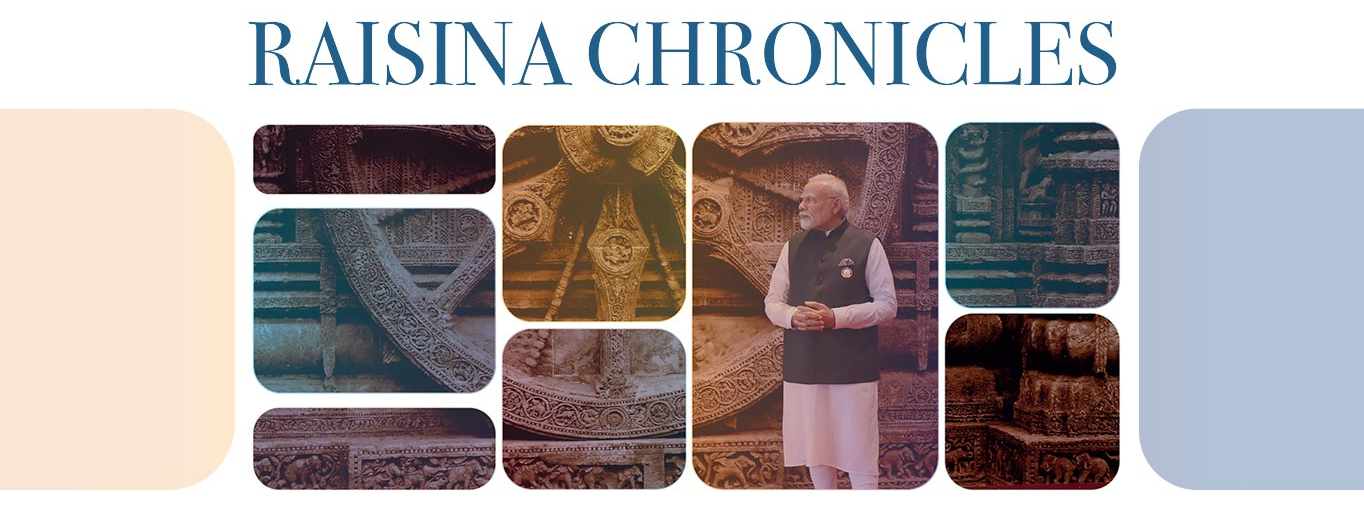
This article is a part of the series - Raisina Chronicles 2024
The Raisina Dialogue, organised by the Observer Research Foundation (ORF) and India’s Ministry of External Aff airs, is today among the world’s leading conferences on geopolitics, security, and economics. Th e inaugural event was held in March 2016, with Admiral Harry Harris, a predecessor and mentor of mine, serving as keynote speaker. Th e Raisina Dialogue brings together leaders from the military, industry, politics, academia, and various other fi elds, and over the years, has emerged as an infl uential platform to promote multilateralism and address the most pressing security issues facing the Indo-Pacifi c region and beyond.
Admiral Harris’ keynote in 2016 was titled, “Let’s Be Ambitious Together.” He described actions that he believed would advance the bilateral relationship between the US and India, based on the Joint Strategic Vision signed by Prime Minister Narendra Modi and then US President Barack Obama in 2015. Prime Minister Modi’s persistent focus on the India-US relationship and his approach to statecraft has been instrumental in maintaining the necessary momentum for not just the bilateral relationship between India and the US but the free and open Indo-Pacific that he and former Japanese Prime Minister Shinzo Abe worked hard to facilitate.
Admiral Harris had then made the bold suggestion that India, Japan, Australia, and the US should revive the Quadrilateral Security Dialogue (Quad)—an idea first coined by the late Prime Minister Abe, in 2007. Six months later, following the discussions at the inaugural Raisina Dialogue, US Secretary of Defense Ash Carter and Indian Defence Minister Manohar Parrikar signed the Major Defense Partner designation—a status unique to India. It institutionalised the progress made to facilitate defence trade and technology sharing to a level on a par with that between the US and its closest allies and partners.
One year later, in 2017, the Raisina Dialogue hosted the first panel that included the Quad nations and an academic panelist from Indonesia. Raisina’s efforts to push the boundaries on the Quad inspired Admiral Harris to recommend an official name change for the US’s oldest and largest combatant command. In 2018, at Admiral Harris’ change of command and retirement ceremony, Secretary of Defense Jim Mattis officially announced the name change from U.S. Pacific Command to U.S. INDO-PACIFIC Command (USINDOPACOM), highlighting the connection and importance of the Indian and Pacific Oceans to the security landscape of the region.
Admiral Harris believed then, as I do now, that the US-India relationship represents the most significant opportunity for both countries in the twenty-first century. However, bold and audacious leadership is needed to expand and deepen the strategic partnership to harness the inherent potential of our two great democracies and the growing ties between our people, economies, and governments.
Admiral Phil Davidson, my immediate predecessor, continued Admiral Harris’ efforts to make Raisina a crucial incubator for multilateral conversations that senior military officers across the region must have. Six months following the Raisina Dialogue in 2018 and the announcement of the USINDOPACOM name change, the firstever ‘two-plus-two’ meeting of the US’s and India’s top defence and diplomatic officials took place. The third foundational agreement, known as the Communications Compatibility and Security Agreement (or COMCASA), was also signed at that time, which provides the possibility of Indian military units gaining access to a secure Common Tactical Picture, in turn allowing Indian military units to receive data from the US and friendly counterparts during exercises or operations. In January 2019, Admiral Davidson sat on the first all-military officer panel at the Raisina Dialogue, which included the Quad nations and France. The panel underscored the need for multilateral collaboration between like-minded countries to maintain stability in the security landscape and a free and open Indo-Pacific.
A few months later, at the second two-plus-two between India and the US, the Industrial Security Annex was signed, allowing for the transfer of technologies supporting defence production. Additionally, the Basic Exchange and Cooperation Agreement, the latest foundational agreement that gave India expertise in geospatial intelligence, provided India the mission planning capability to work with real-time data to forces when using weapons like cruise missiles, ballistic missiles, and drones. Finally, Australia joined the Malabar Naval Exercise, which coincidentally sat on top of various political and military dialogues and arrangements between the Quad countries. Today, all four countries constitute permanent members of the Malabar Exercise, which takes place every other year at various locations in the Indian and Pacific Oceans.
Following Admiral Davidson’s last engagement at the Raisina Dialogue in April 2021, he announced in his final Congressional testimony that the Indian and US navies are now securely sharing information with one another. India has substantially increased its acquisition of US defence equipment. Defence sales are at an alltime high, with India operating US-sourced platforms such as P-8A Poseidon, Precision-Guided Excalibur Munitions, and helicopters like the Apache and Chinook.
Following Admiral Davidson’s last engagement at the Raisina Dialogue in April 2021, he announced in his final Congressional testimony that the Indian and US navies are now securely sharing information with one another.
Admiral Davidson communicated to the Raisina Dialogue in 2021 that the US expects substantial progress on interoperability and information sharing, as well as service-level and joint militaryto-military quadrilateral collaboration between India, Australia, Japan, and the US at a pace all four countries are willing to accept as the relationship continues to mature.
I assumed command of the USINDOPACOM shortly after the 2021 Raisina Dialogue and attended my first Raisina Dialogue in March 2022. I thoroughly enjoyed meeting with the Chiefs of Defense from the Quad nations, the Chief of Defense from the UK, and the Deputy Director for International Affairs from France. I got to see first-hand why Raisina was so important—it provides the opportunity to meet with many allies and partners who are singularly focused on the issues facing the Indo-Pacific. Thirty days later, ORF America opened its doors in Washington, D.C., acknowledging that the USIndia partnership will be a defining one for the foreseeable future, not always without its differences and difficulties, but moving together towards convergence and cooperation.
This relationship between two of the world’s three largest populations, two of the world’s largest militaries, and, in the near future, two of the world’s largest economies will naturally have global implications. Therefore, generating a better understanding of each other’s policies is imperative. This long-term investment of an ‘ideas bridge’ between India and the US on global issues was energised because of the Raisina Dialogue.
As the world’s oldest and largest democracies, the US and India would gain from a closer partnership—one that is indispensable for promoting and maintaining global peace and prosperity. Indeed, the US-India relationship endures and continues to develop based on shared principles and a complementary vision of the future. The US views India as a critical security partner in Asia. Participants are willing to advance the US-India relationship through this dialogue based on our shared love for democracy and freedom.
As the world’s oldest and largest democracies, the US and India would gain from a closer partnership—one that is indispensable for promoting and maintaining global peace and prosperity.
A panel at last year’s Raisina Dialogue, titled The Future of Conflict: Lessons from the Third Decade, took a deeper look at the impacts of conflict on the global community on the heels of the March G20 Foreign Ministers’ Meeting. Over the past two years, the US and India have expanded their defence activities and consultations and recently concluded the last of the “foundational defense agreements” across all the services and defence intelligence services, capping off a nearly twodecade effort by policymakers in both countries to formalise the legal sinews of operational defense cooperation.
From Harry Harris to today, the Raisina Dialogue has created the political and social space for us to witness the foreign ministers from the Quad nations discuss on a global stage the issues that concern them most. All four countries have made efforts to nurture the Quad and work towards an agenda that our governments are now working on together. Japan’s foreign minister at that time, Yoshimasa Hayashi, who is a gifted pianist, referred to himself and his three colleagues as the Beatles—they all play together but can also work solo. Just 60 days after Raisina, the Quad military chiefs met again at the IndoPacific Security Dialogue at Sunnylands in California for more focused discussions on the security and political landscape and how the militaries could work closer together across the region to help build confidence, reinforce the rules-based international order, and support further regional integration.
From Harry Harris to today, the Raisina Dialogue has created the political and social space for us to witness the foreign ministers from the Quad nations discuss on a global stage the issues that concern them most.
The next Raisina Dialogue, scheduled in February 2024, will be my last as the USINDOPACOM Commander. I believe the relationship between the US and India has an irreversible momentum as long as the conditions continue to foster opportunities for more robust economic integration and increased military interoperability. The Raisina Dialogue will continue to play a vital part in what many believe is the most substantial bilateral relationship for the twenty-first century and a gold standard for shaping multilateral engagements, as witnessed by the Quad.
Please read the full volume here.
The views expressed above belong to the author(s). ORF research and analyses now available on Telegram! Click here to access our curated content — blogs, longforms and interviews.




 PREV
PREV



